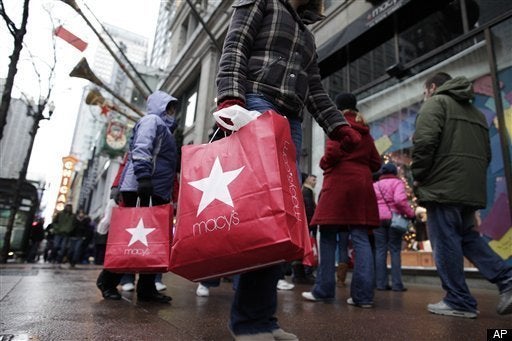
Whatever consumers' mood may have been over the past decades, brands and marketers have always had something just right for it. Down in the dumps? Forget your woes and boost your endorphins with a little retail therapy. Feeling unloved and unappreciated? Treat yourself to a little TLC with some of these good things you deserve. Bored? Just look at all the exciting things we have to set your pulse racing! In love? Find something wonderful to show that special person how much you care. On top of the world? Celebrate with a shopping spree!
These pitches may be exaggerations but they're not falsifications; marketing aims to press emotional buttons because emotion drives decisions. Smart brands and marketers know that even when consumers appear to be interested in what a product does, what really motivates them is how the product makes them feel. When I say "consumers" I mean any of us who has felt more than a passing interest in a gadget or an item of clothing or a vacation. What gets us interested are the feelings that we have as we think about the product and the feelings we expect to experience with it. This is obviously the case with movies and music -- the product is the experience -- but it also applies to virtually anything that we buy, from kitchenware and garden tools through underwear and personal care products to electronics and jewelry.
Most of us don't buy products; we shop and buy with the intention of getting the emotions we want. We buy the sizzle, not the sausage. That's one of the reasons why people sometimes pay and walk out of the store without their purchase; the shopping and the paying provided the emotions they wanted and the product was just part of the process. It's one of the reasons why so many American closets and attics and garages are overflowing with stuff that's gathering dust after being used just a few times at most; the pleasure was in the getting, not in the having.
As marketers and as consumers we have become more skilled than we know at using all the elements of the consumer experience -- advertising, research, shopping, purchasing, packaging and customer service -- to enhance positive emotions and banish negative ones. It's what psychologists call mood regulation and it's driven the economy for years. Sadly, retailers and brands are now facing one of their biggest mood regulation challenges ever. Measures of the mood among Americans consistently show the prevailing social mood is negative -- Gallup, Pew, New York Times/CBS News are all finding that Americans aren't seeing much in public life to fire up their positivity; they're expecting things to get worse before they get better.
Until the Great Recession took hold Americans could banish their blues by heading for the stores, cheerfully intoning the adage "when the going gets tough, the tough go shopping" and whipping out their credit cards. That's changed. Far fewer Americans have the cash or credit to spend their bad feelings away. Far more Americans are hanging on to their money, just in case times get even worse. Attitudes have shifted from spending to saving. Many households are intent on paying off debt or "deleveraging." The home-sweet-home piggybank is not an option for the 28 percent of mortgage-financed U.S. homeowners living with negative equity.
The big question for consumer businesses now is whether the mindset of American consumers is going through a temporary blip or is changing for good. Will the cash tills ring merrily again when the economy eventually recovers or will once-bitten consumers hang on to thriftier ways as the Greatest Generation did after the trauma of the Great Depression?
Nobody can say for sure whether, when or how the economy will recover. What we can say for sure is that Americans will seek ways to feel good if they can; feeling bad is not only unpleasant, it's also unhealthy. The U.S. Centers for Disease control reports that 6.7 percent of U.S. adults experienced a major depressive episode in the past 12 months; the annual prevalence of anxiety disorders is around 10 percent. Stress and depression are risk factors in cardiovascular disease.
For astute brands and marketers there are now outstanding opportunities to adapt their mood-managing expertise to this new reality. Some nations may accept cruel fate with a dour shrug and fatalistic acceptance, but that's not the American way. The fledgling U.S. movie industry rose to the challenge during the Great Depression of the 1930s: "In the face of economic disaster, it kept alive a belief in the possibility of individual success, portrayed a government capable of protecting its citizens from external threats, and sustained a vision of America as a classless society."
Now in the ongoing economic crisis, brands and marketers need to be asking themselves which emotions will resonate with their target audiences, which emotions the brand can credibly work with and how those emotions fit with the brand's products. Marketers seeking insight into those emotions are welcome to check out Euro RSCG's Little Book of Nexts to get an overall heads-up on 2012 or sector-specific pointers. There are emotional pay-offs involved in many of the phenomena it covers, such as authenticity, plucky colors, curation, mood meters, digital detox, farmcations and positive psychology.
I don't expect brands and marketers to turn the crisis round, but I do expect them to step up to the mood challenge. I do expect some to come through the crisis much stronger by finding ways to help Americans enjoy good feelings that are right for these times.
Naomi Troni is the Global Chief Marketing Officer at Euro RSCG Worldwide. Euro RSCG Worldwide's Little Book of Nexts -- predictions for 2012 -- can be downloaded at here.